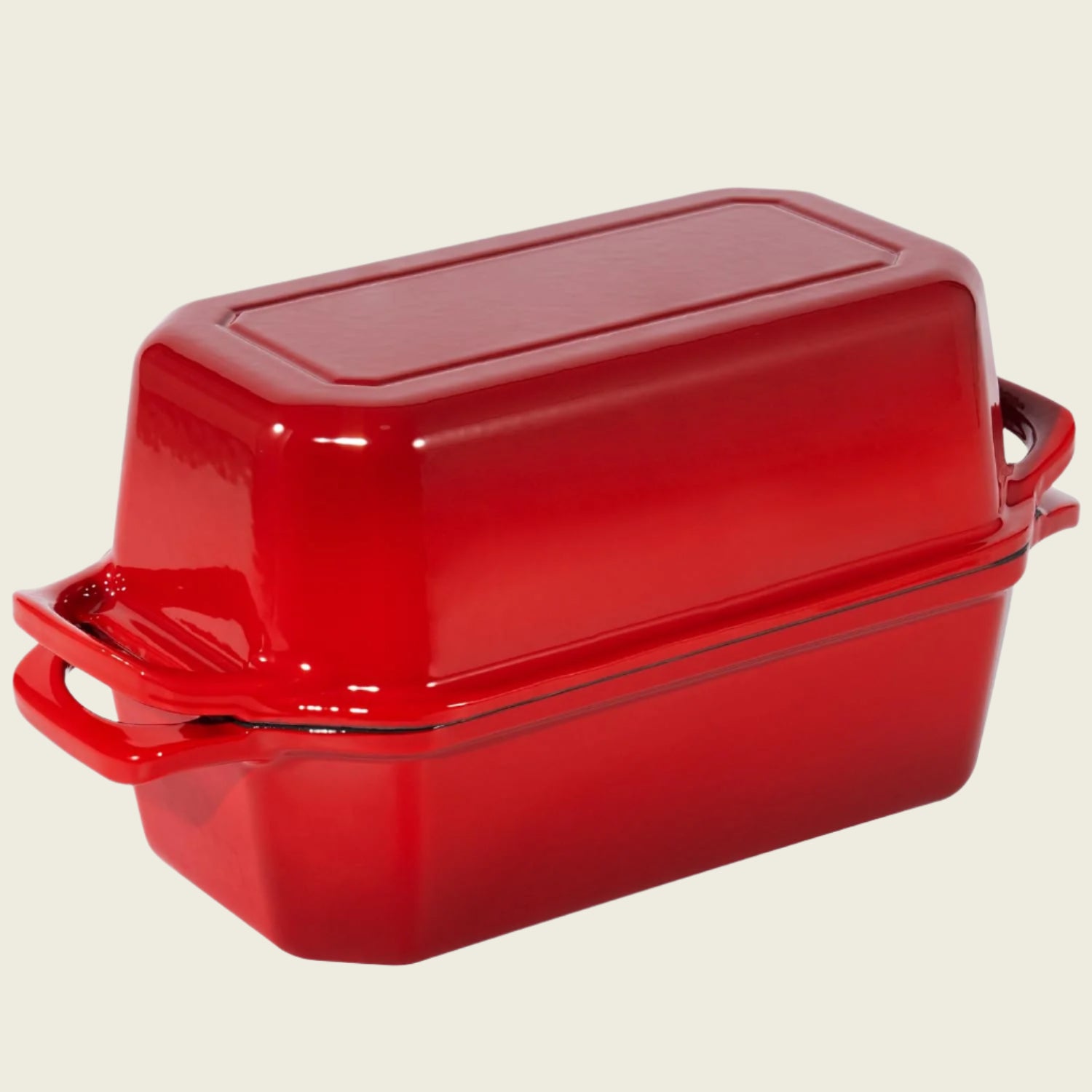How to Cook with Enameled Cast Iron Without Food Sticking
Share
Enameled cast iron cookware often looks like a dream — glossy, colorful, and built like a tank. But for many cooks, that first experience can be frustrating. Eggs stick. Chicken skin welds itself to the surface. And suddenly, that beautiful pan feels like a very expensive mistake.
The truth is, enameled cast iron isn’t non-stick. It’s not meant to be. But once you understand how it works — and why a bit of sticking can actually make your food taste better — it becomes one of the most rewarding materials to cook with.
What Enameled Cast Iron Really Is
At its core, enameled cast iron is simply raw cast iron coated with enamel — a smooth, glass-like layer fused onto the metal at high heat. That coating isn’t paint or plastic. It’s finely ground glass that forms a durable, nonporous shell.
This enamel surface does two very important things:
-
Prevents rusting. The iron underneath never touches moisture.
-
Stops reactions with acidic foods. You can simmer tomato sauce, deglaze with wine, or make a citrus glaze without worrying about metallic flavors or stripped seasoning.
That’s a huge advantage over traditional bare cast iron, which relies on a fragile layer of baked-on oil for protection.
Why Food Sticks (and How to Stop It)
The enamel surface is smooth, but not frictionless like Teflon or ceramic coatings. Its job isn’t to release food effortlessly — it’s to hold and radiate heat evenly. Once you respect that purpose and adjust your technique, you’ll find it behaves beautifully.
Here are three key rules for stick-free cooking:
1. Preheat Slowly
Enameled cast iron is thick and dense. It needs time to come up to temperature evenly. Set it on low to medium heat for about five to seven minutes. This allows the entire iron core — not just the enamel surface — to heat evenly.
Cranking the heat too high too quickly can cause thermal shock, where the enamel expands faster than the metal underneath. Over time, that stress can lead to cracks or chips.
Tip: Always preheat with something in the pan — a bit of oil or liquid helps moderate the temperature rise.
2. Use Enough Fat
Because enamel isn’t non-stick, it needs a proper barrier between food and surface. For foods that tend to cling — eggs, fish, chicken skin — don’t be shy with the oil. A visible layer (a tablespoon or two) works best.
A quick wipe with an oily paper towel won’t cut it. Treat it more like stainless steel than non-stick: give it a good coating, and your food will release naturally once it’s properly seared.
3. Control the Temperature
Once preheated, keep your heat moderate. Watch the oil — if it’s smoking excessively or the food browns instantly, the pan is too hot. Turn it down.
Enameled cast iron holds heat extremely well, so small adjustments take a little time to show. Most sautéing and searing can be done at medium heat or below. High heat is rarely necessary except for boiling.
Bonus: Use the Right Tools
Wood, silicone, or nylon utensils are ideal. Metal tools can scratch or dull the enamel surface over time.
Why a Little Sticking Is a Good Thing
If you’ve ever noticed brown bits clinging to the bottom of your pan after searing meat or vegetables, don’t panic — that’s fond, and it’s pure flavor.
Those caramelized specks are formed by the Maillard reaction, a chemical process between amino acids and sugars that happens around 300°F. It’s what gives seared food its deep, savory complexity.
The trick is to let the food stick just a little while it browns. That firm contact with the hot surface is what develops those complex flavors. Non-stick pans, by contrast, are designed to prevent this process entirely — and as a result, they produce flatter, less flavorful results.
Turning Fond into Flavor
Once you’ve built that gorgeous golden crust, you can transform it into a rich sauce through deglazing.
After removing your main ingredient, pour in a splash of wine, broth, or even water while the pan is still hot. The liquid will sizzle and loosen the stuck bits. Stir and scrape gently with a wooden spoon, and the fond dissolves into the liquid, creating a deeply flavorful base for sauces or gravies.
As a bonus, this makes cleanup much easier — you’ve already lifted off most of the residue.
